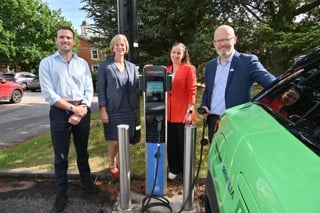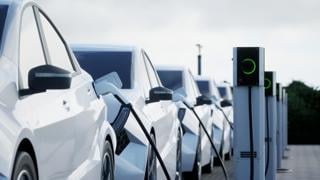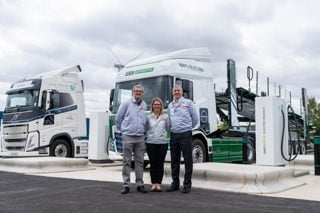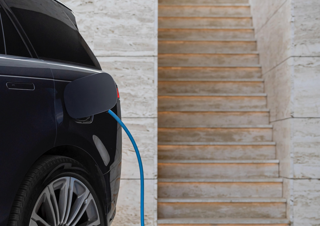By Richard Staveley, CEO at EO Charging
Heavy commercial vehicles are responsible for around 25% of CO2 emissions from road transport in the EU and approximately 6% of the region’s total emissions.
There is increasing pressure on governments and transportation authorities worldwide to reduce emissions from vehicles. This has translated into legislation encouraging commercial and public sector fleet operators to electrify their vehicles.
This legislative push has, so far, become the main reason for fleet operators to adopt electric vehicles (EVs) – but legislation alone is not enough to propel a global movement.
Fleet operators need a commercial and business reason to move towards the future of electrification, overcoming challenges around EVs being seen as a capital expenditure (CapEx) problem rather than an opportunity.
Managers who want to convert their fleets to electric need to justify the investment. This involves understanding the long-term cost value, positive environmental benefits, and impact on consumers and customers.
Challenges on the journey to electrification
One of the biggest barriers to EV adoption remains the initial expense. This is especially the case with larger vehicles, such as buses and trucks, where it can be difficult to sell the CapEx internally.
There is a justified resistance to change, as the affordability of Battery Electric Vehicles (BEVs) and their necessary infrastructure presents a formidable challenge for fleet operators, necessitating substantial upfront investments.
The practicalities of charging and a perceived lack of infrastructure add to the problem. The unreliability of charging stations has prompted some fleet operators to procure more EVs than traditional fossil-fuel-powered vehicles.
For bus operators, this has led to the acquisition of additional charging equipment to ensure redundancy in case of station failures, further amplifying the perceived cost of maintaining electric fleets.
Fleet operators also face many regulatory challenges, including complex permitting processes and standards for vehicle procurement, all of which present barriers to building a strong business case for EV adoption.
Uncovering the long-term value of electrification
However, there are also many benefits to electrification that need to be presented in any business case being built for internal stakeholders.
While electric vehicles may have higher upfront costs than internal combustion engine (ICE) vehicles, the total cost of ownership, taking into account fuel and maintenance costs, can be lower over the vehicle’s lifetime.
Operators are gradually recognising these long-term commercial benefits – and this alone can enable them to build a more robust case based on long-term ROI.
Simply put, a BEV is more economical when calculating its total cost of ownership than a fossil-fuel equivalent. And with mass adoption and technological advancements, this will only get better.
New service offerings that include financing options such as charge assurance enable operators to start their electrification journey without the necessary upfront costs.
Charge assurance operates on an ‘as-a-service’ model, with fleet managers working with partners to ensure the responsibility for reliable charging and efficient uptime sits in the right place.
Navigating the challenges to EV adoption can be difficult, and fleet managers deserve to work with partners who can proactively manage their fleet’s shift towards electrification as they maintain their charging infrastructure.
Building a sound business case for fleet managers
Overcoming the challenge of CapEx is a big consideration on the path to electrification, but justifying the investment for stakeholders goes further than cost.
Consumers have become more aware of the environmental impact of their actions, and as a result, they demand real action from the businesses they interact with.
This influences their decisions over transport, which extends beyond their personal vehicles and includes EVs for delivery services, public transportation and ride-sharing.
This provides added impetus for fleet managers to accelerate their plans to electrify and is another reason to shift towards EV adoption.
Alongside this, many governments worldwide have introduced policies and incentives to encourage a move towards more sustainable transport.
These include subsidies for purchasing electric buses, grants for building charging infrastructure, tax incentives, and mandates for transitioning to zero-emission fleets.
These incentives create a more favourable environment for fleet operators, and electrification gains momentum as the long-term benefits are realised.
For fleet managers, working with partners to develop cost-effective and scalable charging technologies will help overcome cost challenges, and reiterating the value for consumers is the key to justifying investment and getting stakeholders on-board.
Electrification is the future of transport, and while it’s certainly on the rise, continuing to drive this momentum forward is the crucial next step to success.



















Login to comment
Comments
No comments have been made yet.